The lower Maribyrnong River is an ‘estuary’, which is that part of the river that meets, and is affected by the sea; in this case Port Phillip Bay.
Panel 1: Introduction and The Estuary
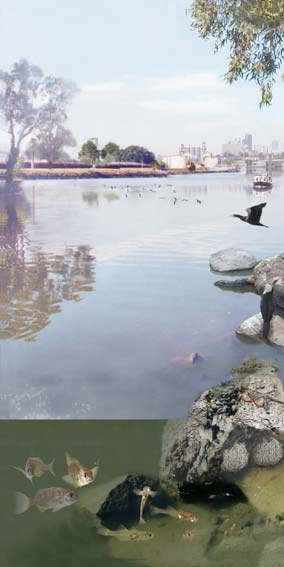
The Exhibition
This exhibition, Pobblebonk, is primarily about the animals or fauna of the Maribyrnong River estuary. The purpose of this exhibition is to bring attention to these animals and their habitat so that habitat can be better understood and appreciated with the hope we can continue to keep it alive.
It has been put together with the help, support and input of a number of organizations and individuals with a diverse range of backgrounds and experiences.
It is remarkable how many different species, indigenous and introduced, still live in the estuary despite the battering it has undergone with a city growing up around it. It is also remarkable what food chains, food webs and biological neighbourhoods remain relatively intact or workable.
Descriptions and explanations in the exhibition are simple and brief (in many cases no description is given at all) because more detail can easily be found through many other sources. The exhibition is more an introduction or a presentation of these wonders in our own neighbourhood.
The Estuary
The lower Maribyrnong River is an ‘estuary’, which is that part of the river that meets, and is affected by the sea; or Port Phillip Bay in this case. The estuary has a very different character from the familiar, freshwater river upstream as it is influenced by both the salty waters of the Bay and the freshwater that flows into it. The Maribyrnong River has a long estuary, about 15 kms, that extends from the confluence with the Yarra upstream to Solomons Ford at Avondale Heights. Near its mouth, in the Port of Melbourne, the river is very deep, having been dredged to a depth of 10 metres. Above the Port, for most of its length, the estuary generally ranges from two to four metres in depth.
Animals
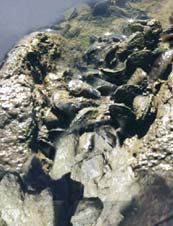
Bivalves
Bivalves include mussels and a range of other clams cockles and oysters both indigenous and introduced. They attach themselves to rocks or bury in the sediment and are generally filter feeders.
(mussels) Dirrap or yuguny (W) dirr or barnawarrabi (B)

Pacific black bream
The Pacific Black Bream is a slow-growing fish, that comes into the Maribyrnong River estuary system to breed. This species of fish grows about 1cm per year. It is not uncommon to see fish 40cm long feeding in the shallows along the banks of the Maribyrnong, these fish could be about 40 years old.
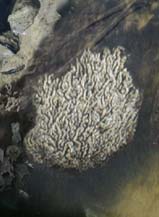
Tubeworms
There are a number of types of worms that are found in the estuary of the Maribyrnong River.
Some live under rocks and others in the mud and sand on the bottom. One species, Galeolaria caespitosa, makes a white calcareous tube.
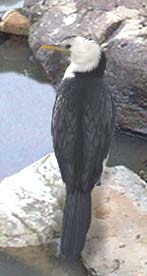
Cormorant
There are a number of cormorant species that are found in the estuary of the Maribyrnong River. Both the larger Black Cormorant and the Little Pied Cormorant (black and white) can be regularly seen diving for their favourite food, which is fish, or drying their wings on pilons and jettiies along the Maribyrnong River.
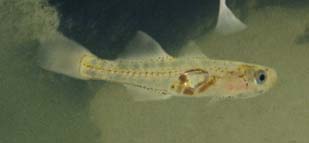
Glass Gobie
Small indigenous fish are found in the Maribyrnong River Estuary.
Images of each of the animals in this exhibition are available to purchase in a high-resolution format. All enquiries should be directed to admin@livingmuseum.org.au or by telephone at +613 9318 3544.
